Are you an animal lover who leads a busy life? You’re not alone, millions of people want pets but worry they can’t because of their busy lifestyle. Read our guide on 7 low maintenance pets for busy people, you might just find your perfect companion.
1. Turtle
Turtles are easy to care for, even for children. For its maintenance, you will need a spacious terrarium, in which the temperature and humidity level should be regularly monitored. It is enough to clean the terrarium once a month and change the water in the drinking bowl every week.
Subtleties:
- Land turtles periodically moult – their skin on their legs and head changes. At this time, you need to bathe the turtle in warm water with the addition of 1 tablespoon of baking soda, and after bathing, lubricate the skin with vegetable oil.
- If the bedding is too soft, the turtle’s beak and claws will grow back a lot. The beak and claws’ overgrown edges should be carefully nibbled with pliers.
- It would help if you did not let the turtle travel around the apartment on your own. You can step on it, it can catch a cold from an accidental draft, and besides this, land turtles have a habit of digging everything that gets under their paws, and their claws are strong.
What do they eat?
Tough grass, cabbage, carrots, beets – turtles do not need any exotic delicacies.
2. Gold fish
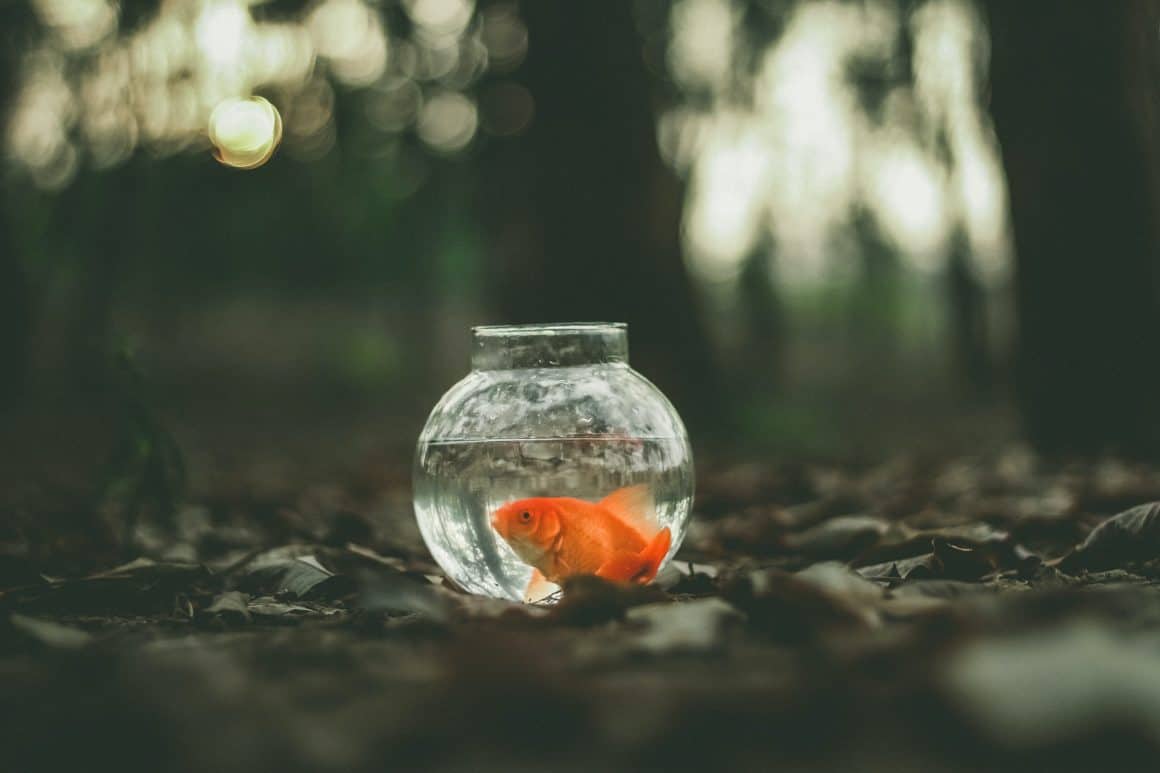
The aquarium is great. All psychologists in the world are talking about its benefits. While watching the underwater kingdom, stress, tension disappears, the heart rate is evened out, and sleep is normalized. Aquarium also helps overactive kids to concentrate.
Aquarium fish do not require much attention. Just admire them from the outside, feed them, keep the aquarium clean, and you are done! You can even go on vacation for a few days by installing an auto feeder in the aquarium, and the fish will be fine! A goldfish in an aquarium can not only brighten up everyday life but also effectively complement the interior.
Subtleties:
- It grows up to 15 centimetres long. Mind this when choosing a water tank. If you buy a container with a volume of at least 40 litres and equip it with a powerful filter, compressor, and heater, all the necessary conditions will be created. Also, it is recommended on this guide from ThePets.net to use a filter to maintain optimal living conditions in the aquarium’s closed ecosystem.
- The goldfish is suitable even for novice aquarists.
- It is recommended to use live plants as a useful vitamin supplement and decoration of an artificial reservoir.
- To make all the aquarium inhabitants comfortable, it is enough to renew about a third of the water in it once a week. If special food has run out at home, boiled eggs, finely grated carrots, cucumbers, semolina, or buckwheat porridge without salt will replace it.
3. Guinea pig
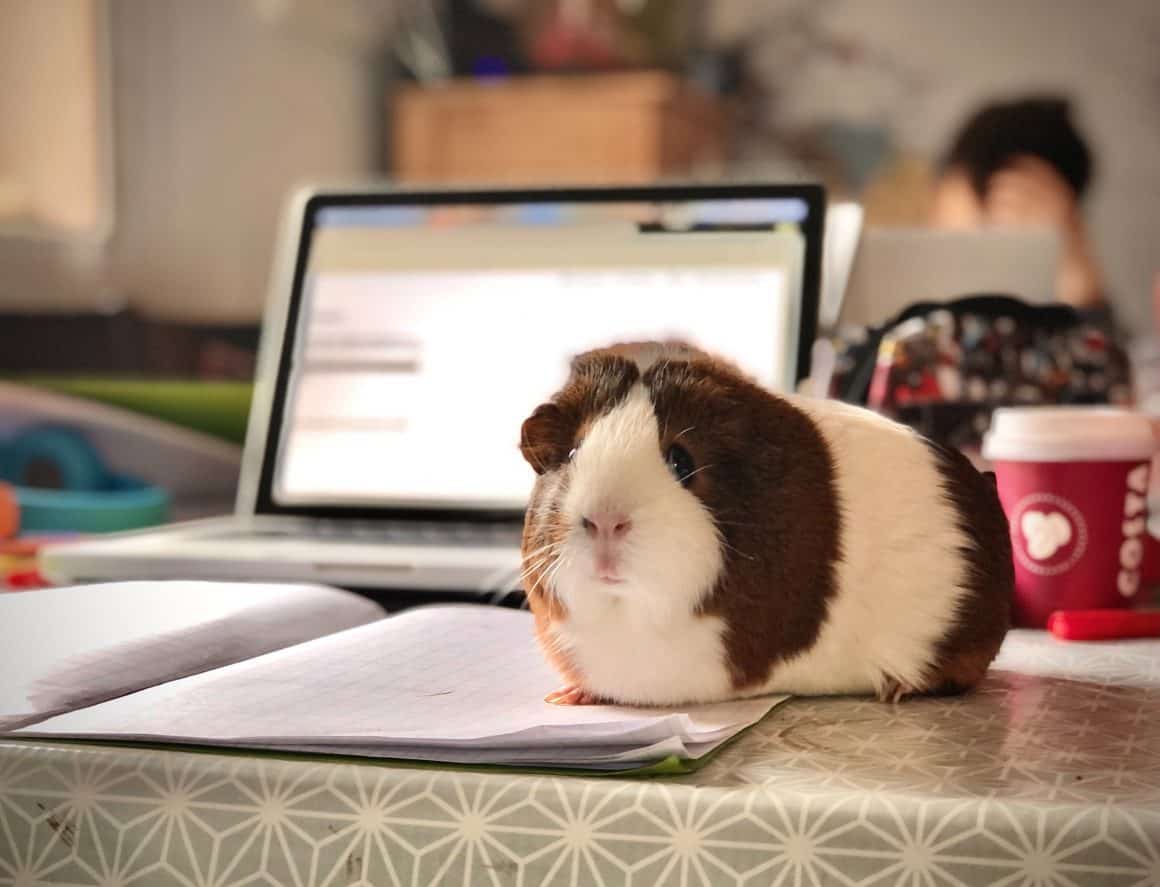
These pets are unassuming in their needs and are always happy with life. The animal only needs to determine its place where it can find shelter – it can be a plastic box, a shallow aquarium, or a plastic cage with a lattice. Hay, sawdust, and straw can be used for bedding, but for a guinea who lives in the lap of luxury, you can treat them to a cage liner from https://luftpets.com/.
Subtleties:
- Guinea pigs like to sit in the arms of the owner, and, unlike hamsters, you can safely let them go for a walk around the house. If the cage is on the floor, after a walk, the pig willingly returns home.
- These are herd animals, so you should not keep them alone. If you do not have time to devote much attention to your pet, you can make a friend to him. Pigs get along well not only with congeners but also, for example, with dwarf rabbits.
What to feed? They perfectly eat specialized food and do not refuse vegetables, fruits, herbs, seeds, grains, dandelions, and hay. It is important to follow the regimen, that is, feed the animal every day at the same time, giving most of the daily requirements in the evening. Guinea pigs are advised to add vitamin C to their drinking water.
4. Budgerigar

A well-equipped cage is the main thing a parrot needs. Drinking trough, feeding trough, and bathing trough are obligatory furnishings. The cage should be rectangular and spacious. It is good if there are not only perches but also a swing or ladder. Sand can be poured into the bottom of the cage. It is better to put the cage in a bright place (but not in the sun) and not in a draft – the brighter the room, the better the parrot will feel.
Subtleties:
- Parrots moult too. The first moult begins at 4-6 months and continues throughout life. Parrots pull out dead feathers, which is almost imperceptible, but if you notice bald patches, you should be on your guard. The causes are likely vitamin deficiency, exhaustion, or a cold.
- To prevent the parrot from growing the tip of its beak (this prevents it from eating), suggest that the birds nibble special mineral stones.
- If you want the parrot to speak, take only one parrot, regardless of gender, and do not install a mirror or toys that look like birds in the cage.
What to feed?
You can buy specialized food and feed for your parrot at any pet store. But water should be given special attention. Tap water and boiled water will not work since the chlorine it contains is extremely harmful to birds. Better to buy non-carbonated drinking water. It is useful to add 2-3 drops of freshly squeezed lemon juice to the water during the moulting period.
5. Hamster
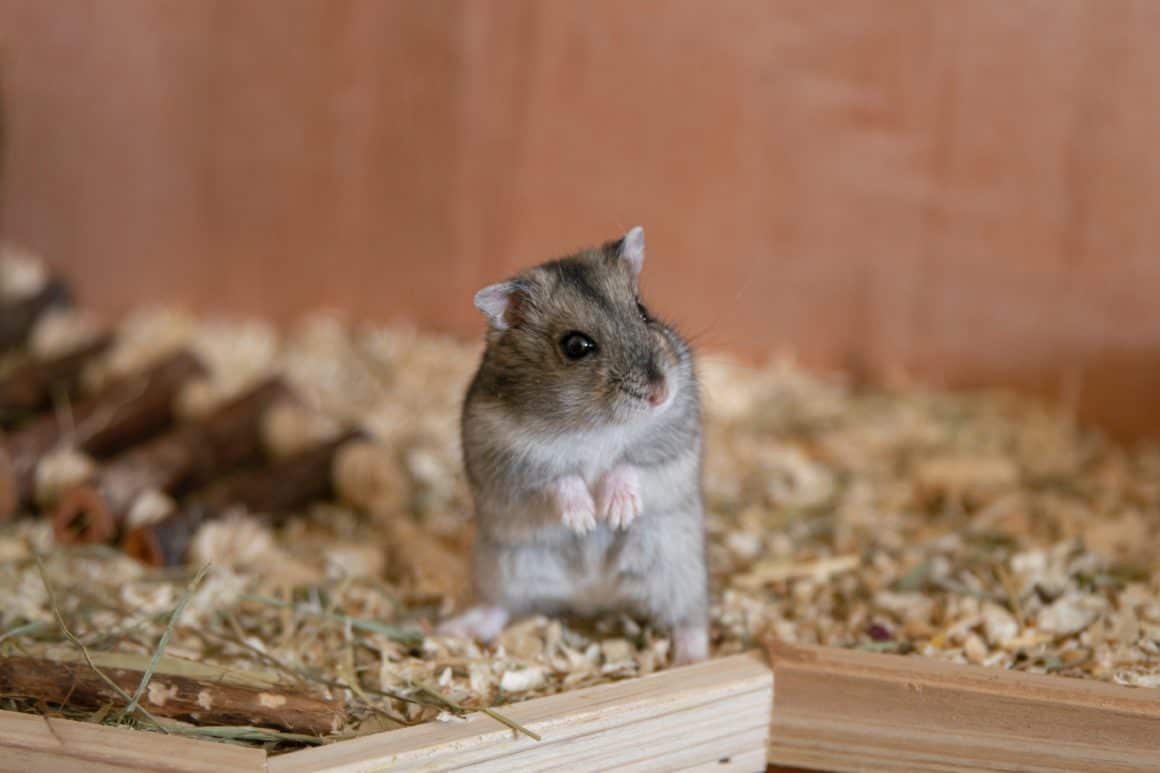
Hamsters need a solid wire cage, as they can gnaw through any other material. Instead of a cage, you can also buy a terrarium. It would help if you cleaned the cage no more than once a week: hamsters really do not like it when, after cleaning, their smell does not remain in the cage. Place the cage away from drafts, heating appliances, direct sunlight, and far away from objects that the hamster can drag into his cage – (curtains, houseplants, etc.). Do not bathe your hamster – it can easily catch a cold. Place a sand bath in the cage for hygiene procedures.
Subtleties:
- Unlike other rodents, hamsters are solitary animals and often do not get along together.
- Walking the hamster around the apartment is also not recommended – it will likely run away. It is better to equip a special paddock with toys for walking.
- The main problem that may arise with these animals is their nighttime activity and their noise.
What to feed?
Both commercial feeds and raw vegetables. It is recommended to keep a mineral stone in the cage so that the hamster grinds his teeth because, like all rodents, they grow continuously, and their outgrowth is highly undesirable.
6. Rat
All you need is a cage, bedding, and toys. Rats should be kept in metal cages with fine wire mesh. If you do not have time to walk your pet, it is best to put the rat in a multi-storey cage and put more toys, ropes, and ladders there so that the animal has something to do. Large sawdust or wood fillers can be used as bedding. It is recommended to clean the cage as soon as it becomes dirty and smells bad.
Subtleties:
- Rats can remember their nicknames and are trainable.
- These are very active animals, and they definitely need walks around the apartment. Be careful: the animal will try everything it comes across and will give special preference to wires.
- Another disadvantage is that rats mark their territory: females are almost odourless, and males – with a slight but unpleasant odour.
What to feed?
The easiest way is to use ready-made rations. And to grind the teeth, you need to give the rats special briquettes, which are also sold in pet stores. Some animals prefer to gnaw the branches of fruit trees: apples and plums are best.
7. Chinchilla
Contrary to popular belief, keeping chinchillas is not a very laborious task. The main thing is to follow a few mandatory rules. The cage with chinchillas should be very spacious. Inside should be at least two wooden shelves at different levels and a wooden house. It is better to choose a hinged, deep, and metal bowl – and fix it above the shelf. Sawdust or wood filler can be poured into the bottom of the cage. The chinchilla is odourless, so there is no need to clean the cage daily.
Subtleties:
- It would be best if you were prepared for bathing. You will need a container with high sides and special sand for chinchillas. The sand bath should be placed in the cage every 3-4 days overnight, and the animal will be happy to carry out hygiene procedures.
- Chinchillas do not tolerate violence against themselves and are completely unsuitable as a child’s toy. If handled roughly, the chinchilla will become shy and may start biting.
What to feed?
You can feed a chinchilla once a day, preferably in the evening. The easiest way is to feed with a special feed. You can give it after one or two days on a pinch of hay or dried leaves. Dried apples, carrots, and hawthorn are suitable as delicacies.
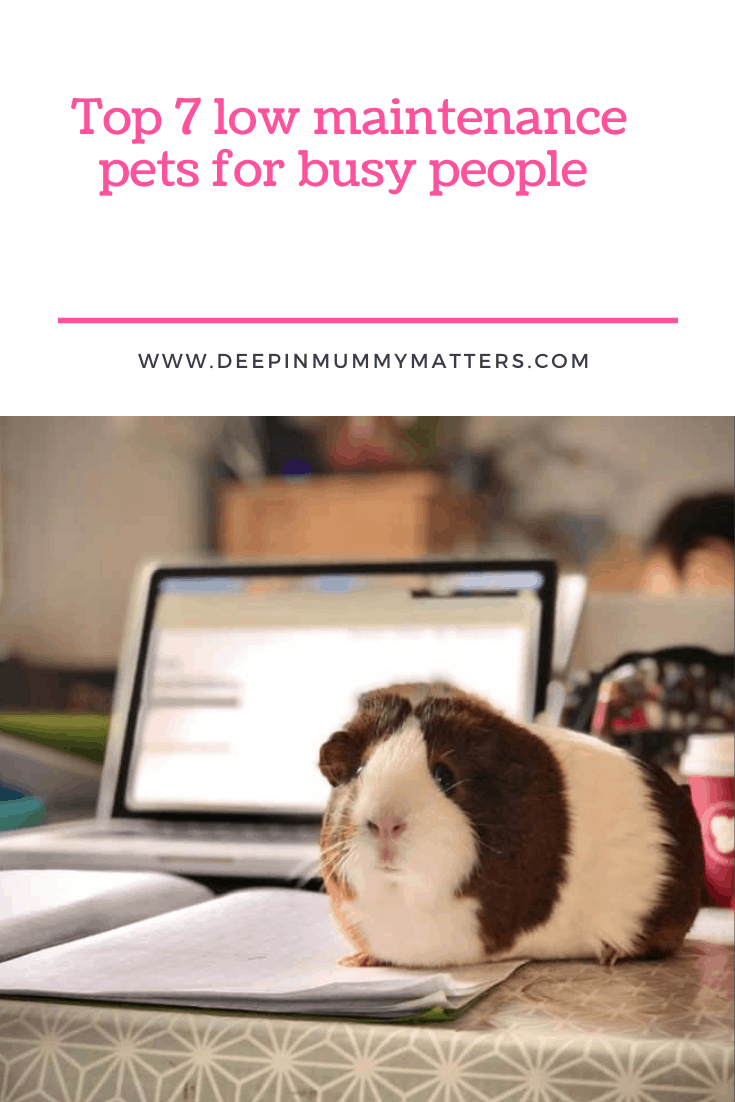

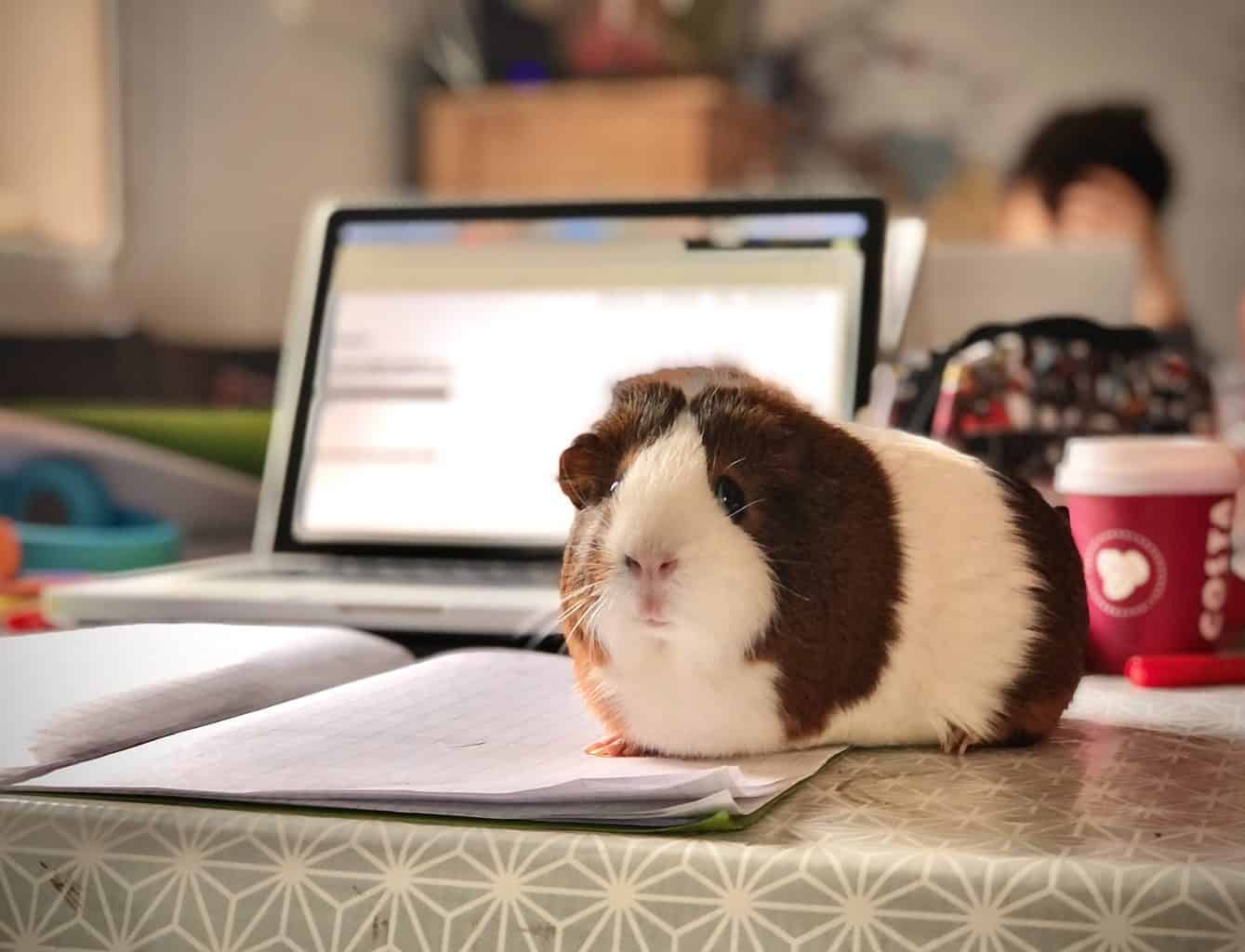
The girls are desperate for some pets but we just don’t have the time , these are some great low maintenance ones 🙂
Pets really can take up so much time, space and money. They provide a lot of love and fun but sometimes people don’t do the research first and then pets get rehomed. Some of these pets might have been overlooked in the past but can be the perfect answer.